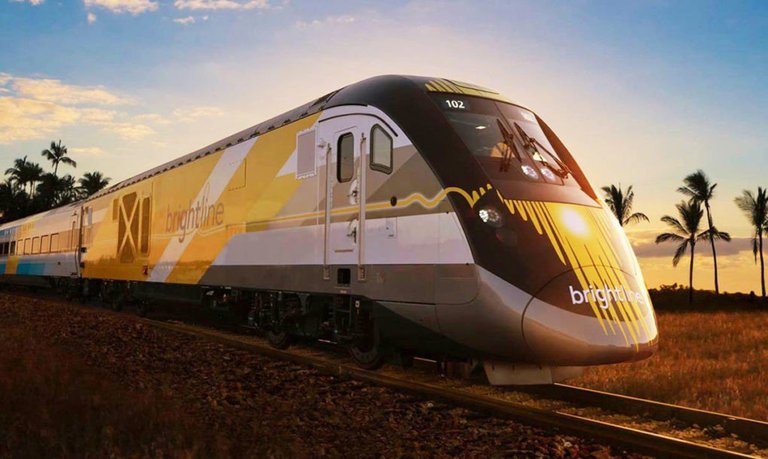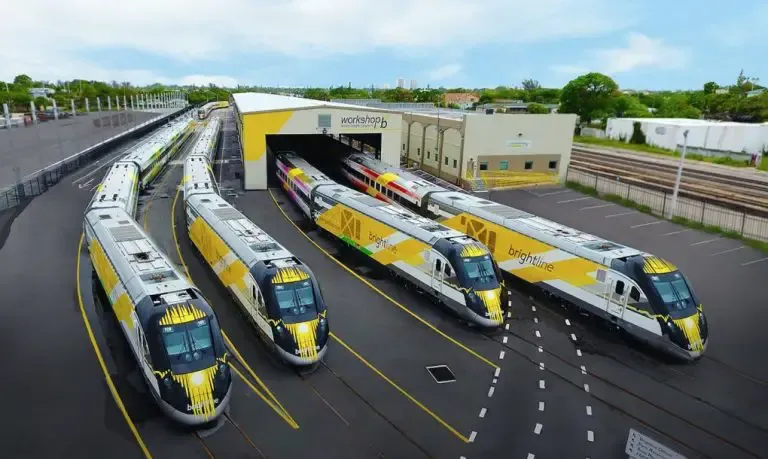
Soon, commuters in Florida will have the opportunity to travel from West Palm Beach to Miami in 60 minutes, rather than five hours. Such will be possible thanks to the country’s first private high-speed rail service, which was funded by All Aboard Florida.
The Brightline express cost $3 billion to construct and can travel at speeds of 120 mph. During its debut this month, it will run slower – at about 80 mph. NPR reports the high-speed trains will run along the state’s densest population corridor, which is accessible to more than $6 million people. As a result of this development, approximately 3 million cars will be taken off South Florida’s congested highways.
According to John Renne, the director of the Center for Urban and Environmental Solutions at Florida Atlantic University, the project represents the first test of the long-awaited U.S. move into high-speed rail.
“It’s the first time that it’s happening, being built by a private company,” Renne told Here & Now’s Jeremy Hobson. “And that’s kind of a game changer for this type of model.”
All Aboard Florida was intent on keeping the train privately-funded. To do this, it secured state approval to sell bonds to fund the project in October of this year.
The service will start this month, just in time for the holidays. Trains will run from West Palm Beach to Fort Lauderdale. By early next year, commuters will be able to travel to downtown Miami. There are also plans to expand to Orlando in the future. To ensure travel is as convenient as possible, All Aboard Florida planned for retail, restaurants, and condominiums to be placed near the stations.
There are many benefits to the country’s first high-speed rail. To begin with, it will drastically cut down travel times for passengers. Second, it is beneficial to the environment, as it reduces the number of cars on the road. And thirdly the construction of private mixed-used real estate developments at each station will guarantee hundreds of millions of dollars of revenue. This could lead to a dramatic improvement of public transportation in America.
Said Renne, explaining that potential revenue was lost when the government “shifted control of transportation to the public sector” approximately a century ago: “When that happened, we lost the connection between the development around the stations and the rail service itself, and we started building a lot of parking lots around the stations,” Renne said. More people stopped using public transportation because “once they’re in their car, they might as well just drive the whole way.”
John Guitar, of All Aboard Florida, echoed a similar sentiment in 2014 when he said:
“The federal highway system expanded … and everyone got off trains and into cars. And we’ve done a full circle now that the traffic and congestion and gas prices are so bad, people are looking for alternatives to get out of their cars and find other ways to get around the state.”
Unsurprisingly, the ambitious project is not without controversy. Reportedly, two counties along the Treasure Coast sued to stop the project; opponents argued that it poses “significant safety concerns and would likely delay commuters in cars.” The majority of the lawsuits have been dropped or thrown out, however.
Those in the boating industry are also concerned. South Florida’s waterways are heavily-traveled by fishing boats and luxury yachts. When the trains are traveling through the area, the bridges must remain down. There is concern that this will slow productivity and “cause congestion on the water.” Said Jim Naugle of the Marine Industries Association of South Florida:
“The economic impact of the marine industry here is bigger than the economic impact of All Aboard Florida and its’ service to Orlando. They need to find a way to preserve that commerce.”
Despite these concerns, the project has continued on track (pun intended).

The company has yet to confirm the price of tickets. However, a 2015 study commissioned by All Aboard Florida suggests it will cost at least $16 to travel from West Palm to Miami. As NPR points out, that’s about $10 more than the price to travel a similar route on the government-run passenger train. The latter option is much slower, of course. Thanks go to The Mind Unleashed for providing this content. Feel free to comment and resteem, all is appreciated. Thank you for your interest.